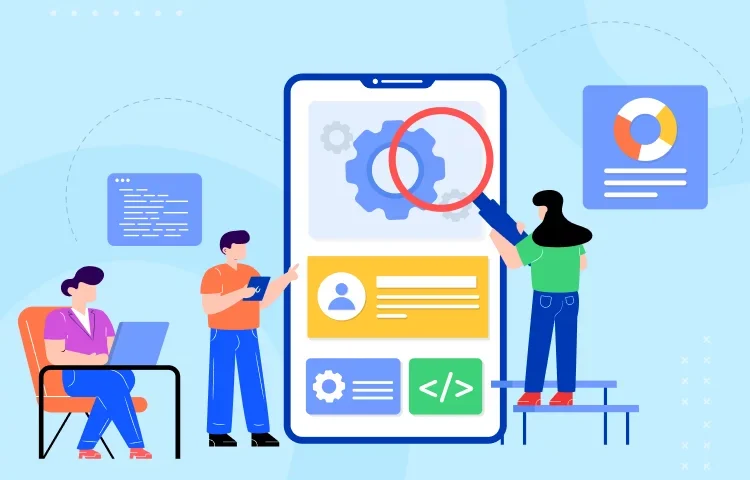App Testing: Ensuring Quality and Performance

Mobile Security: Protecting Your Devices in a Digital World
May 26, 2024
ARKit: Transforming Augmented Reality Experiences
May 26, 2024App Testing: Ensuring Quality and Performance
Thank you for reading this post, don't forget to subscribe!Introduction
In the competitive world of mobile applications, delivering a high-quality product is crucial. App testing plays a vital role in ensuring that applications function correctly, provide a smooth user experience, and meet all requirements. This article explores the importance of app testing, different types of testing, and best practices for achieving comprehensive test coverage.
Why App Testing Matters
App testing is essential for identifying and fixing bugs, ensuring security, and verifying that the app performs well under various conditions. It helps improve the user experience, increases user satisfaction, and reduces the risk of negative reviews and poor ratings. Effective testing can also help save time and costs associated with post-release bug fixes and updates.
Types of App Testing
Functional Testing
Functional testing verifies that the app’s features work as intended. This includes testing user interactions, input validation, and specific functionalities like user registration, payment processing, and navigation. It ensures that all parts of the app function correctly according to the requirements.
Performance Testing
Performance testing assesses how well the app performs under different conditions. This includes testing for speed, responsiveness, and stability. Key types of performance testing include:
- Load Testing: Evaluates how the app performs under expected user loads.
- Stress Testing: Tests the app’s behavior under extreme conditions, such as high traffic or low memory.
- Scalability Testing: Assesses the app’s ability to scale and handle growth in user numbers.
Usability Testing
Usability testing focuses on the app’s user experience. It involves evaluating the app’s interface, navigation, and overall user-friendliness. This type of testing is typically conducted with real users to gather feedback on the app’s design, ease of use, and intuitiveness.
Security Testing
Security testing identifies vulnerabilities and ensures the app is protected against threats like data breaches, unauthorized access, and malware. This includes testing for:
- Data Encryption: Ensuring data is encrypted both in transit and at rest.
- Authentication: Verifying that user authentication mechanisms are secure.
- Authorization: Ensuring users have appropriate access levels.
- Penetration Testing: Simulating attacks to identify potential security weaknesses.
Compatibility Testing
Compatibility testing checks that the app works across different devices, operating systems, and screen sizes. This ensures a consistent user experience regardless of the hardware or software environment. Key aspects include:
- Device Testing: Testing on various smartphones, tablets, and other devices.
- OS Testing: Ensuring compatibility with different versions of operating systems.
- Browser Testing: For web apps, ensuring compatibility across different web browsers.
Automated vs. Manual Testing
Automated Testing
Automated testing uses tools and scripts to perform tests, making it efficient for repetitive and regression testing. Benefits of automated testing include:
- Speed: Faster execution of tests compared to manual testing.
- Reusability: Test scripts can be reused across different versions of the app.
- Consistency: Reduces the risk of human error and ensures consistent test execution.
Manual Testing
Manual testing involves human testers performing tests without automation tools. It is essential for exploratory testing, usability testing, and scenarios where human judgment is required. Benefits of manual testing include:
- Flexibility: Testers can adapt and explore new test cases in real-time.
- Human Insight: Testers can provide qualitative feedback on the user experience and interface.
Best Practices for Effective App Testing
Define Clear Testing Goals
Set clear objectives for what you aim to achieve with your testing efforts. This could include identifying critical bugs, ensuring compatibility, or verifying performance metrics. Clear goals help guide your testing strategy and focus your efforts.
Develop a Comprehensive Test Plan
A detailed test plan outlines the scope, approach, resources, and schedule for testing activities. It should include test cases, test data, and expected outcomes. A well-structured test plan ensures thorough coverage and organized execution.
Prioritize Test Cases
Focus on high-priority test cases that cover critical functionalities and user scenarios. Prioritizing helps ensure that the most important aspects of the app are tested first, reducing the risk of major issues in the final product.
Use Real Devices
While emulators and simulators are useful, testing on real devices provides more accurate results. Real devices help identify issues related to hardware, OS versions, and network conditions that might not be apparent in a simulated environment.
Regularly Update Test Scripts
For automated testing, keep test scripts updated to reflect changes in the app. Regular updates ensure that automated tests remain relevant and effective in identifying issues in the latest versions.
Incorporate User Feedback
User feedback is invaluable for identifying usability issues and improving the app. Incorporate feedback from beta testing, user reviews, and usability tests into your testing process to address real-world concerns.
Perform Continuous Testing
Integrate continuous testing into your development process. Continuous testing involves running automated tests throughout the development cycle, ensuring early detection of issues and reducing the time needed for final testing phases.
Conclusion
App testing is a crucial step in the development process, ensuring that mobile applications are reliable, secure, and user-friendly. By understanding the different types of testing, leveraging both automated and manual testing, and following best practices, you can deliver a high-quality app that meets user expectations and performs well in various conditions. Prioritize app testing to enhance user satisfaction, reduce post-release issues, and stay competitive in the ever-evolving mobile app market.
For more information: www.ecbinternational.com


